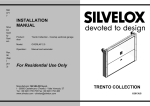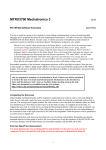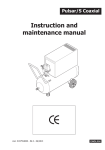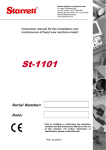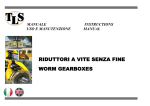Download Installation, Use, Maintenance.
Transcript
Table of Contents Section 1 Introduction - Section 2 Permanent Magnetic Hoisting Devices - Section 3 manual contents who this manual is intended for manual updates collaboration with the user conformance to the Directives – declarations responsibility reason of use and operation installation and constraints model choice specifications Installation Instructions 3.1 Preparations Before Installation (for the user) - First checks - Packaging checks - Transport, unloading and removing the packaging 3.2 Hoisting Device Installation - Name plates summary 3.3 Working with the Hoisting Device - working with the hoisting device - Operational checks (for the user) Section 4 Use and Maintenance Instructions 4.1 Qualification 4.2 Operation 4.3 Deactivation 4.4 Expected Uses: Criteria and Precautions 4.5 Prohibited, Incorrect and Inadvisable Uses 4.6 Further Precautions 4.7 Maintenance 4.8 Disposal/Scrapping Section 5 Safety Standards Section 6 Identification Data - of the hoisting device of the customer Section 1 Introduction Manual Contents - This manual contains a description of permanent magnetic hoisting devices and refers to their ‘intended use’ as well as to their operational specifications, performance and instructions for installation, use and maintenance. The following documentation is supplied as enclosures to this manual: - data summary coupon – manual delivery and guarantee; - manufacturer’s statement - inspection/acceptance report of the following hoisting accessory Who this manual is intended for - This manual is directed to: - Plant, shop, yard manager; - Installation personnel; - The operator; - Maintenance personnel; The manual must be kept buyout procreate personnel in a safe, handy place where it can be readily available for consultation. In case of loss or deterioration, the replacement document must be requested directly from S. P. D. S.p.A. via G. Galilei, 2/4 – 24043 Caravaggio (BG), citing this manual’s code. Conformance to standards – Declarations This technical documentation, “Instruction manual for the installation use and maintenance of prominent magnetic place game devices”, S.P.D. S.P.A is identified by the code _______ This documentation is written in consideration of the harmonized norms UNIEN 292 – 1st part, item 3.20 and 2nd part, item 5 and of the Pr EN 104 F project of June 1994. The hoisting devices are produced according to the community directed 89/392 CEE and successive amendments in 91/368 CEE, 93/44 CEE and 93/68 CEE, called machine directives. All parts that make up the hoisting device conform to Directive requirements. The manufacturer’s statement guarantees the conformance. Responsibility In reference to what is contained in this manual and manufacturer declines all responsibility in case of: - Use contrary to national laws on safety and accident prevention; - Incorrect preparation of the yard and structures on which the train will be operated from; - Lack of, or incorrect observation of the instructions furnished in the manual; - Unauthorized modification; - Use by untrained personnel Manufacturers guarantee In order to take advantage of the manufacturers guarantee the user must carefully observe the methods indicated in the manual in particular: - Always remain within the hoisting accessory’s use limitations; - Always carry out constant and careful maintenance; - When using the hoisting accessory use only personnel of proven capability and attitude who are adequately trained for the purpose. Up-Dating of the Manual The manual reflects the state of the art of the machine at the moment of its introduction on the market and conforms to all laws, directives, and norms in the forces that time. The manual cannot be considered inadequate even if there are successive updates based on new experiences. Can any successive changes, adaptations, etc. that are done to the machines marketed successively do not obligate the manufacturer to intervene on previously supplied equipment nor to consider the equipment for the related manual as inadequate for lacking. Any supplements to the manual that the manufacturer considers appropriate to send to the user must be kept together with the manual and considered an integral part of it. Collaboration with the user The manufacturer is responsible to its customers for the furnishing of further information and for considering improvement proposals for the purpose of making this manual more responsive to the needs of those for whom it was prepared. In case of termination of the hoisting accessory, the primary user is requested to let the manufacturer know the address of the new user in order to send any necessary communications and updates. Section 2 Permanent Magnetic Hoisting Devices Reason of Use and Operation The permanent magnetic hoisting devices are used for storage and transport jobs for the loading the machine tools. They are independent of any external energy source which allows continuous use without recharging for indefinite time periods. They take advantage of the intrinsic magnetic energy of the incorporated permanent magnets. They are activated by a lever that moves a core or rotates a group of magnates so that the magnetic flow passes through the load (work phrase) or closes inside (release phase). Installation Constraints The permanent magnetic hoisting device is equipped with a ring suspension system and therefore works only if suspended from the hook of the hoisting equipment. Models Choice and Specifications In order to obtain optimal and durable operation for which the hoisting device was intended the model of choice must be a function of actual performance requirements. The parameters that must be carefully considered in making that choice are: Carrying capacity: Maximum weight of a load to be hoisted must be determined. It must never be more than that of the hoisting equipment (hoist, crane, etc.). The nature of the load: The material must be ferromagnetic, have smooth, clean surface with an adequate thickness. The steel to be moved must be at a low carbon content otherwise – in case it’s an alloy – special reductions must be taken into account, specified as follows. SP10 Permanent Magnetic Hoisting Devices in Alnico Alloy This item is designed for fast movements. Light and reliable, it increases productivity and safety during loading and unloading jobs. Protected by robust cast steel housing, the magnetic circuit is formed by permanent magnets in alnico to develop a considerable lifting force. The magnetization occurs by rotating a lever 90° and securing it in the ON position. This maneuver is carried out with the hoisting device in contact with the ferrous part. The active face has two longitudinal polarities and a central “V” that allows e grasping of smooth and cylindrical parts. On request, the “V” can be made with a larger angle to hoist diameter bars. For correct use, the hoisting device must be used on ferrous material with a minimum thickness of 20mm. SP15 Permanent Magnetic Hoisting Devices This item, due to its very small, prismatic, shape, is capable of hoisting smooth, round ferrous material with a minimum thickness of 15mm. The magnetization is carried out by rotating a lever 90° and placing it in the safety stop. This maneuver is carried out with the hoisting device in contact with the ferrous part. SP16 Permanent Lifters with Neodymium Magnets This lifter has strong cast steel housing and an internal magnetic circuit made up of NEODYMIUM permanent magnets. It’s very small size high capacity makes it the best lifter, presently, on the market. The prismatic shape of the lifter base makes it ideal lifting both round and flat pieces. It solves the problems of lifting thin sheets of parts with a minimum of 10mm. It comes with a 12 month guarantee which will become void in the case that the lifter is tampered with. SP30 Permanent Magnetic Hoisting Devices in Ceramic Alloy Ceramic permanent magnetic hoisting devices are designed for lifting smooth ferrous material with a minimum thickness of 20mm. It is also used for round bars with a diameter as shown in the table below (dimension F). The magnetization is carried out by rotating a lever 90° and placing it in the safety stop. This maneuver is carried out with the ferrous part. Section 3 Installation Instructions 3.1 Preparations Before Installation (for the user) First Checks For installation of the hoisting device the following preliminary operations need to be carried out: - Check to see that the hoisting equipment is adequate; - Check that room to maneuver is available; - Load mass preparation for the dynamic tests equal to: Nominal carrying capacity X 1.1 - Preparation of supplementary load masses for the static tests equal to: Nominal carrying capacity X 1.5 - Installation of appropriate warning signboards, in conformance to the norms Packaging check - - Check the supplied documentation list with the packaging list or the delivery note (Includes the instruction manual for use, installation and maintenance, the internal test report and a guarantee and statement of conformity). The standard packaging is made out of a smooth surface on which the hoisting device is placed. It is covered by a sheet of polyethylene or else it is placed in a crate if its weight it is less than 30 kg. - The material, if conserved properly, can be stored in the for a period of about two years in covered conditions at temperatures of between –20°C to +70°C With a relative humidity at 80%. For different environmental conditions, a specific packaging needs to be arranged. - See to that disposal of the packaging according to regional laws in force relating to the type of packaging material, if there is no provision for separation that material type. Transport, Unloading, and Removing the Packaging The transport must be carried of by qualified carriers able to ensure correct handling of the transported material. The manufacturer does not assume responsibility in the case of transport by the customer or of carriers chosen by the customer. - Avoid placing any heavy items on top of one another as this can cause damage - Open any packaging from the top and remove various parts by this thing vertically. - Check the integrity of different parts - Check the packing list documentation or the delivery note - For the unloading and handling of the hoisting device, no special equipment is needed Name Plate Summary The identification plate of the hoisting device is a riveted aluminum label laid out as shown in the figure. It contains the following: - The maximum carrying capacity in kilograms - The year manufactured - Its own weight in kilograms - Model - Serial number On the opposite side, the Force-Magnetic Gap curve is shown, functional for the use of the hoisting device. Legibility Protection That place must be cleaned periodically in order to be able to read the related data shown. In case of deterioration and the inability to read the plates, it is recommended to request additional plates from the manufacturer, citing the contained in this manual. 3.2 Hoisting Device Installation The hoisting device comes ready to be hooked to the hoisting equipment. The customer must ensure that: - the hoisting accessory specifications conform to those required for the intended use; - The wording carrying capacity of the crane or hoist is equal or more then the entire load to be lifted. For the installation, the hoisting device needs to be suspended from the hook of the hoisting equipment. Check that the hook has a safety catch. If the hoisting device is used on a hoist, the hoist chain must be pulled tight. The hoist hook must be tightly secured with the hooking eyelet by clamps of plastic material in order to avoid the possibility, during the lowering and placement phase position and remaining that way during lifting. 3.3 Working with the Hoisting Device Place the hoisting device on the part to be handled in the center of gravity, if possible. Rotate the control lever 180° to the magnetization ON position (work phase) ensuring that it is fully locked. When the operation is finished, after the load has been placed, free the lever and rotate it to the demagnetization OFF position (release phase). Operational Checks According to Pr EN04F, the size of the hoisting device must be such that the adherence force is always at least three times the value of the nominal load. Therefore, checking the carrying capacity is done in the factory according to the following procedure: - rest the hoisting device on a low-carbon steel plate that is secured to the ground - Connect the hosting device to the hook suspended on a bridge crane, by means of a digit dynamometer. Rotate the control lever and pull with the bridge crane - Read the adherence force value on the dynamometer when the hoisting device releases its grip. The force value read is divided by the nominal carrying capacity giving the safety of ratio that must always be equal to or more than three. - After the test has been carried out, ensure that the hoisting device has not been damaged or undergone permanent deformations. The internal test certificate, enclosed with this manual, shows the positive results of the tests. - Regardless of the positive results of the factory testing on the hoisting device accessory by the manufacturer, the user must ensure the suitability of the lifting device for the use it is intended for, in order to be sure of complete safety during operation. - In regards to this, the user must carry out static and dynamic tests according to the following procedure. “Loadless” Operational Tests Procedure - Enable the operation of the hoisting equipment (hoist, crane, etc.) - Activate the 1’. main power switch - Place the emergency stop button in “allow to run” position - Push the “run/alarm” button - Check the hoisting function by pressing the “raise/lower” buttons - If carrying out with electric trolley, check the translation function by pressing the “right and left” buttons (If there are two speeds, check their operation). Proceed to the Dynamic Load Test as follows: - prepare adequate load mass for that test equal to: Nominal carrying capacity X 1.1; - Place the hoisting device as close to the center of gravity as possible to avoid lateral pulls; - So lonely place the hoisting device in tension avoiding jerky movements; - If available, carry out the load tests using “slow” speed; - Slowly lift the load and check that it occurs without difficulty and is not making any unusual noises and that there is no permanent deformation or structural yielding; - Stop it in a suspended position at height of 10/20cm; - During this operation do not remove the hoist or trolley; - Check that the suspended load does not yield and that there is no permanent deformation or structural yielding. Proceeds to the Static Load Test as follows: - prepare adequate load mass for that test equal to: Nominal carrying capacity X 1.5; - Place the hoisting device as close to the center of gravity as possible to avoid lateral pulls; - So lonely place the hoisting device in tension avoiding jerky movements; - If available, carry out the load tests using “slow” speed; - Slowly lift the load and check that it occurs without difficulty and is not making any unusual noises and that there is no permanent deformation or structural yielding; - Stop it in a suspended position at height of 10/20cm; - During this operation do not remove the hoist or trolley; - Check that the suspended load does not yield and that there is no permanent deformation or structural yielding. Section 4 Use and Maintenance Instructions 4.1 Qualification Before beginning work with the hoisting device, carry out the following operations: - visually check the condition of the lifting equipment; - Activate the power supply by placing the main switch in the ON position - Check the functionality of the hoisting equipment. 4.2 Operation The hoisting device must be installed on a hoisting system in an environment with emergency exits. The working environment must have the following specifications: - minimum temperature of -10°C - maximum temperature of 40°C - maximum humidity of 80% Operator: Must be suitable for the work and physically able to handle all the needs connected with the operation of the hoisting device. The operator must not permit anyone to get close to the area during use of the hoisting device and must impede its use to unauthorized personnel (and above all to 16 year old minors). The operator must follow the indications supplied in order when using the hoisting device. Particularly, the operator must carefully observe the indications contained in the manual. Carrying Capacity: The carrying capacity limit must never be exceeded, even though it has been determined with ample margin of safety. Maneuvers: It is good practice to carry out one movement and time since in this way a maneuver can be initiated, stopped and constantly followed by the operator. Lighting: The lighting level of the environment must always be enough to ensure maximum safety when using the hoisting device for the use that it was intended. 4.3 Deactivation To deactivate the hoisting equipment at the works and observe the following: When the hoisting device is attached to the hoisting equipment: It needs to be raised to a height not less than 2.5m so as not to create disturbances or dangerous situations to personnel moving under the hoisting equipment. When the hoisting device is removed from the suspension hook: The equipment needs to be placed in a secluded site to avoid the possibility of tripping over it. Position the hoisting equipment hook at a height of more than 2.5m. 4.4 Expected Uses: Criteria and Precautions The correct use of the hoisting device allows taking full advantage of the performance and ensuring protection against any hazards that always exists when handling suspended loads. IT IS ALWAYS NESCESSARY TO DO THE FOLLOWING: 1) Follow the indications and instructions shown in the use and installation manual 2) Observe the instructions and warnings shown. The warning plates shown on the hoisting device and in the maneuvering areas are accident prevention signals and must always be clearly legible. 3) Check the performance response of the hoisting device relating to the operations for which it was intended (Works cycles – Handling loads) 4) Check the integrity of the carrying structure 5) Before starting any maneuver check that the work area is free of obstacles 6) Check the maintenance and condition (cleanliness, lubrication) 7) Ensure that the hoisting hook is not a worn, damaged or without safety devices (spring catches) and 8) Ensuring the centering of the hoisting assembly on the perpendicular of the load before moving the load 9) During the handling of operations (Lifting, translations, rotations), ensure that the load does not take obstacles 10) Give warning to personnel who work in the maneuvering area that load handling operations are about to begin 11) Work outside the radius of maneuver of the lifted load 12) Activate the various movements avoiding the carrying out of commands in rapid succession as much as possible 13) Use the “slow” speed for the approach and positioning of the load 14) Before leaving the place of maneuver activate the stop button on the button panel and disengage the main switch of the hoisting equipment. 15) For all of relations use suitable work clothing in accordance to the safety norms in the workplace 16) Advise of any operation malfunctions to the superintendent and place the hoisting device in the non-operational The condition 4.5 Prohibited, Incorrect, and Inadvisable Uses Using the hoisting device for prohibited maneuvers and incorrect use can cause dangerous situations to personal safety and damages to the work environment. The actions described below are some of the more expected possibilities of “bad use” and are therefore to be considered absolutely prohibited. NEVER DO THE FOLLOWING: 1) Do not use the hoisting device to lift or transport personnel 2) Do not lift loads while people are passing below the maneuvering area 3) Do not pass through linger, work, or maneuver below the suspended load 4) Do not allow use of the hoisting device to unqualified personnel or minors16 years or younger 5) Do not use the hoisting device is not physically suitable 6) Do not use hoisting device is not equipped with adequate work clothing or personal protection measures 7) Do not use hoisting device if not able to pay attention during the lifting and transfer maneuvers of the load 8) Do not leave the suspended load unattended 9) Do not lift loads more than the nominal carrying capacity of the hoisting equipment or apply load mass to the hook that is more than the nominal carrying capacity 10) Do not use the hoisting device for jobs different from what it was intended for 11) Do not lift unbalanced loads 12) Do not lift more than one part at a time 13) Do not cause the load to oscillate during transfer 14) Do not lift “guided loads” 15) Do not bump the load into the building structure or other machines or systems 16) Do not arrive at the “end of travel” at full speed during transfer movements 17) Do not entrust maintenance and repairs operations to personnel who have not been instructed by the manufacturer 18) During maintenance phases: o Do not use on suitable tools o Do not work without personal protection o Do not service with of having removed the lifted load 4.6 Further Precautions The poll surfaces of the hoisting device and the contact surfaces of the part where the device is placed must be smooth and clean. The pole pieces must be in complete contact with the part to be moved. The nominal carrying capacity is checked for a steel load with a thickness less then the width of the pole piece. For material different then lowcarbon steel the following reduction factors need to be used in the carrying capacity: Cast steel 0.9; Steel with 3% silicon 0.8; type C. 60 steel 0.7, iron 0.45. Even the width of the load affects the carrying capacity of the hoisting device: For thickness less than the width of the pole piece, the carrying capacity reduction is about proportional to the ratio between the thickness and this width. The load temperature must not exceed 50°C: for higher temperatures in is best to consult our technicians. 4.7 Maintenance The hoisting devices not need special maintenance. It is necessary to keep the lever lubricated to reduce rotation force on it. It is best to keep the suspension ring of the hoisting device under control and check that contact surfaces of the pole pieces are not ruined. 4.8 Disposal/Scrapping If the hoisting device needs to be scrapped, see to the separate disposal of its parts keeping in mind the different material types of the parts (metals, permanent magnates). If possible, hire specialized and capable companies for the job and always observe the law in matters regarding disposal of industrial solid waste. It is necessary to advise the disposal company about residual hazards formed by the permanent magnates. 5 SAFETY STANDARDS USE HOISTING DEVICE ONLY AFTER HAVING COMPLETELY READ AND UNDERSTOOD THE USER’S MANUAL CAUTION: NEVER MAGNETIZE THE HOISTING DEVICE BEFORE IT IS ON THE LOAD TO BE LIFTED. SMALL PIECES OF METALLIC MATERIAL COULD ATTACH ITSELF TO THE HOISTING DEVICE IF IT IS MAGNETIZED TOO SOON. Check the condition of the hoisting device Position of wasting device at the center of gravity of the park to be lifted Magnetize the hoisting device by bringing the lever to the ON position Lift and move the load cautiously, avoiding imbalances. The load must not touch obstacles. Never get underneath the load. Guide the load by pushing or pulling on the edges. Do not guide the load by using the hoisting device itself. Never be in a position that if the load drops it can cause physical harm. Clean the poles and the surface of the parts in contact with the hoisting device. File any burrs. Advise personnel near the work area that a hoisting operation is being initiated. Slightly lift the load and move it to see if it holds. Carefully set the part down. Bring the lever to the OFF position to demagnetize the part. Slowly raise the hoisting device ensuring that the part is detached.















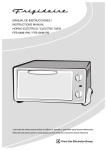
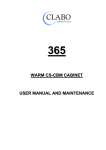

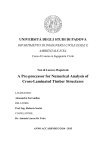

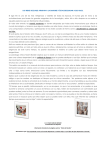
![[Japan 2050 Low Carbon Navigator] A User's Guide](http://vs1.manualzilla.com/store/data/006875094_1-ced6fe1a76728af6d97cc334c26ca8ac-150x150.png)


